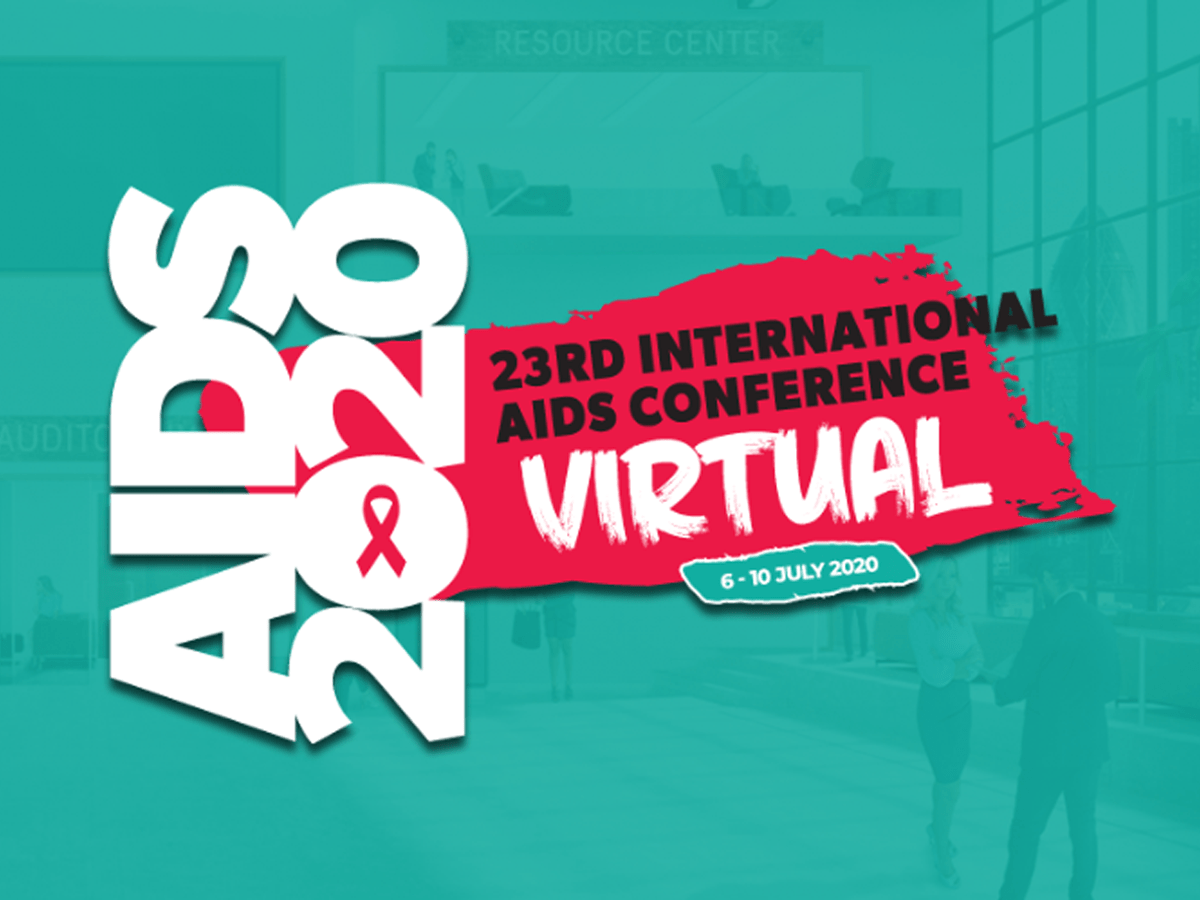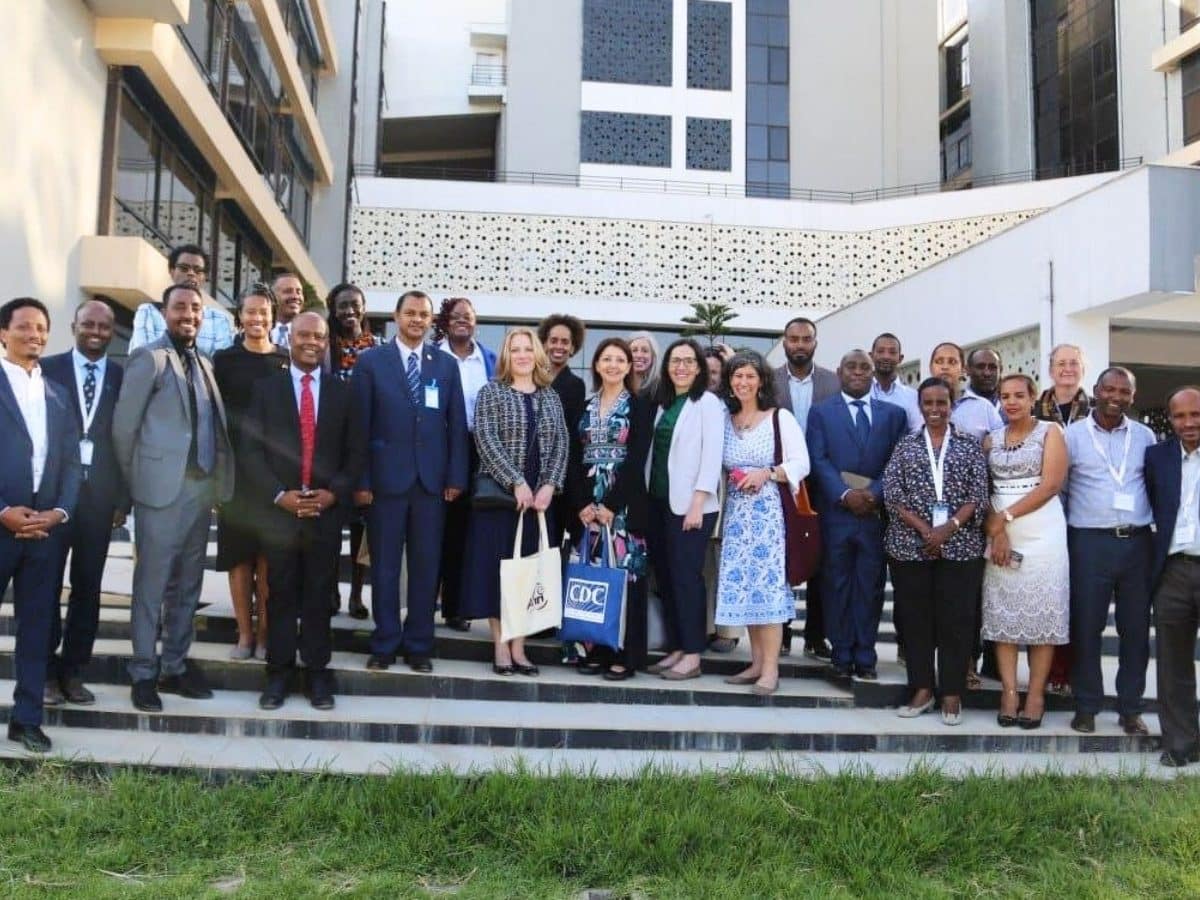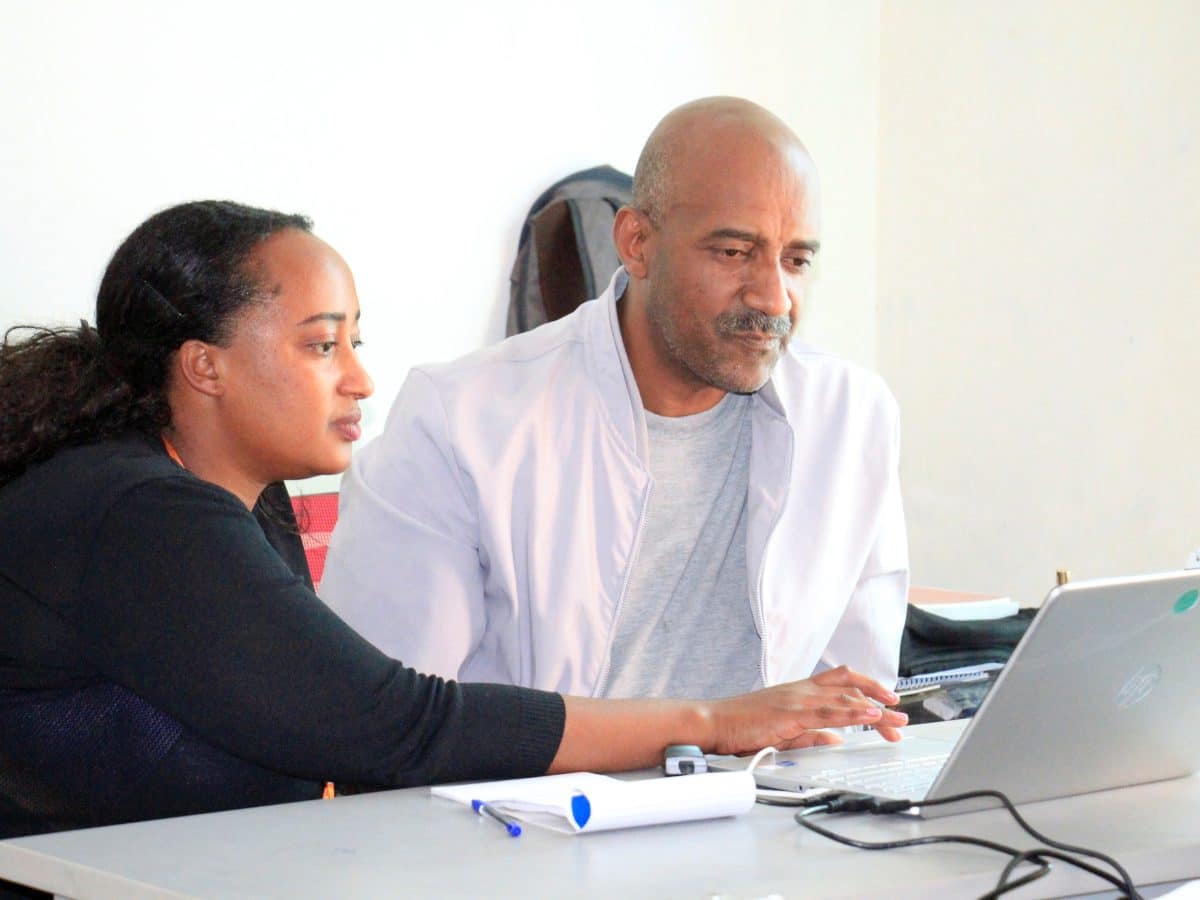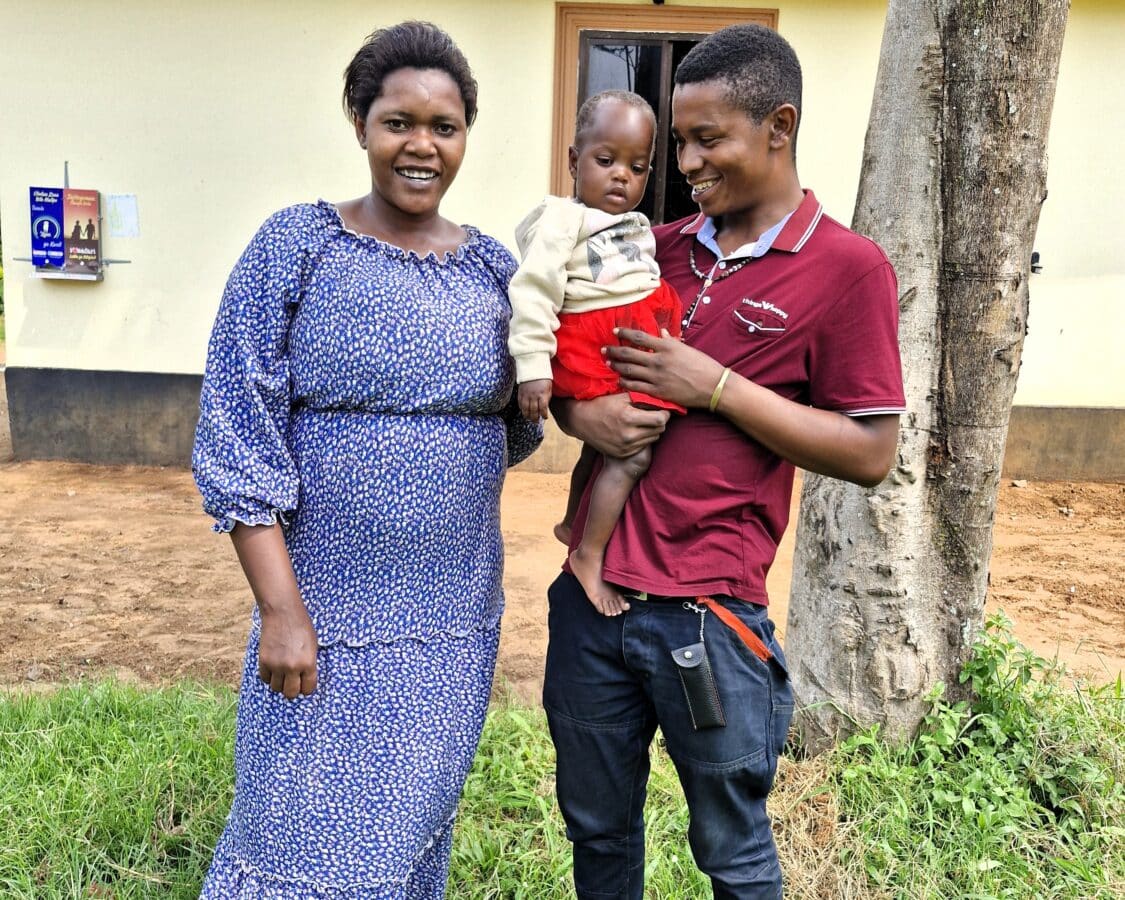Every year, leading minds from around the globe convene at the International AIDS Society Conference to talk about the innovations, resources, hopes, and challenges facing those on the front lines of a disease that has killed over 32 million people. Although the AIDS 2020 conference looked very different from previous years, the aim was the same: to enable those present to access and engage with the latest HIV science, advocacy, and research in hopes of ending one of the world’s most pressing health challenges.
With 12 prime sessions, 27 workshops, two symposia, two episodes of Youth Force Daily, three oral abstracts, two poster discussions, 29 virtual posters, and four satellite sessions all focused on the global HIV responses, ICAP was proud to contribute to the science and the conversations of this year’s virtual conference. ICAP leadership presented a host of sessions, panels, posters, abstracts, and case studies drawn from our in-depth knowledge of the science of HIV and the development of significant, systems-level responses to major public health challenges through 6,000 sites across more than 30 countries.
Here are six key takeaways from presentations made by the innovative health professionals leading ICAP’s continuing response to the global HIV epidemic.
Testing and Treatment Will Continue to be Critical Components of the Global AIDS Response
Wafaa El-Sadr, MD, MPH, MPA, ICAP’s global director, continues to provide key leadership in the global HIV response. As an active member of a UNAIDS steering committee leading a process for the development of updated HIV targets and estimates of the resources needed for the global AIDS response up to 2030, Dr. El-Sadr presented the outcomes of technical consultations on testing, treatment, and service integration in a satellite session led by UNAIDS.
In her presentation, Dr. El-Sadr noted that over the course of many conversations with leaders at the forefront of the HIV response, the committee found a consensus on the importance of improving testing and treatment services as a means to ending the HIV pandemic. In particular, the steering committee found a determination among those interviewed to continue advancing testing and treatment services, especially for sub-populations who have lower achievement rates of the 90-90-90 goals today. “From the community perspective, [these] programs are truly effective only when they provide high-quality services that are available, accessible, and affordable,” Dr. El-Sadr said.
The outputs from the process will guide the global AIDS response from 2021 to 2030 by informing the decision-making of major global partners and driving countries’ national target-setting and strategic planning.
Differentiated Service Delivery: One Size Does Not Fit All
In a session moderated by ICAP’s Susan Michaels-Strasser, PhD, MPH, RN, FAAN, public health leaders discussed the importance of person-centric approaches to simplify and adapt service delivery across the HIV prevention and care continuum that meet each patient’s needs in their unique life circumstance. Each case study presented a highly localized response to provide HIV prevention, treatment, and care services in a variety of contexts around the world.
Peter Preko, MBChB, MPH, project director of ICAP’s CQUIN learning network, spoke to the variety of service delivery options available to deliver HIV treatment and care to patients at the individual, peer group, and community levels. “There is now growing evidence for less intensive DSD models for stable recipients of care,” he said. “These less-intensive models allow for multi-month antiretrovirals in a health facility or in a community setting either as individuals or as a group.” Research continues to show that these programs increase patient engagement, are cost-effective to the health facilities that oversee them, and are also comparable with facility-based models in terms of ART adherence, virologic suppression, and mortality. Through the CQUIN project, Dr. Preko and his team work to provide technical assistance to countries across sub-Saharan Africa looking to strengthen their use of DSD models of care for people on treatment.
Khin Nyein Chan, MD, MSc, country director for ICAP in Myanmar, also gave a glimpse of how her team designs inclusive programming for key populations most at risk for HIV, who are often part of highly stigmatized groups including sex workers, men who have sex with men, and people who use drugs. By sensitizing health workers on how their own biases towards people in highly stigmatized groups can impact patient outcomes, ICAP’s work in Myanmar is helping to build more friendly public clinic services for these key populations. “Our sensitization sessions have helped both the health care workers and the clients to whom they are providing services,” said Dr. Chan. “The sessions help health care workers to provide better care to key populations and integration of key population services into public health sector facilities now feels acceptable among both.” After an initial trial, the intervention has been adopted into the country’s HIV National Strategic Plan for 2021 – 2025 and additional trainers from key advocacy groups and community networks have been certified as master trainers.
Susan Michaels-Strasser concluded the panel saying, “How we work is a global challenge, but greatly impacts the services we provide, the outcomes of those services, and the impact on people’s health.”
This session was presented in partnership with the Association of Nurses in AIDS Care.
Systems-Level Solutions are Key to Last-Mile Efforts to Reach the 95-95-95 HIV Goals
As a closing perspective in a four-part presentation, Susan Michaels-Strasser offered her perspectives on what it will take to reach global epidemic control of HIV around the world. In particular, she emphasized the dogged and determined efforts of the global community over the course of the 20th century that culminated in the eradication of Smallpox in 1980. Notably, collective efforts utilized three critical approaches to eradicate the Smallpox virus: focused surveillance, rapid identification, and ring vaccination. “While we don’t aim to eradicate HIV specifically, as many people live healthy and full lives, and we don’t yet have a vaccine for HIV, we can learn a great deal from last mile efforts required to eradicate Smallpox,” she commented. “These lessons can provide valuable insight into what it will take to get to [HIV] epidemic control.”
Additionally, she spoke to the importance of fostering resilient health systems using aggregate data at the facility and systems levels to inform service delivery and optimization. “Data are like the vital signs of the clinic that tell us ‘how are we doing today? These types of data-driven approaches have shown us here at ICAP that they make a phenomenal difference.’” She gave several examples from ICAP’s I-Surge approach, which has been used at-scale across ICAP’s 30-plus country of operations.
Differentiated Service Delivery Models Can Enhance the Resilience of Chronic Care Systems
The prevalence of non-communicable diseases (NCD) in people living with HIV (PLHIV) has been evident for years, as has the importance of providing integrated HIV and NCD services. Global and national guidelines increasingly call for HIV programs to provide integrated screening, prevention and treatment services for NCDs and their risk factors, including hypertension, diabetes, cardiovascular disease, lung diseases, cancers, and depression. However, the scale-up of HIV/NCD services has been slow. ICAP’s Miriam Rabkin, MD, MPH, principal investigator for ICAP’s CQUIN network, highlighted how differentiated service delivery programs and non-communicable disease services could be integrated to address the prevalence of NCDs among people living with HIV as countries introduce new models of care for this population. Additionally, these models of new service delivery programs may also enhance the resilience of chronic care programs in the face of emergencies such as the COVID-19 pandemic.
Using her work with ICAP in Kisumu, Kenya as a case study, Doris Naitore, regional director for ICAP Kisumu, shared the outcomes on the introduction of multiple NCD screenings alongside routine HIV testing, not only increased the number of patients who were screened for NCDs, but also created an opportunity for patients to more discreetly be tested for HIV as well.
Scaling up TB Preventive Treatment for People Living with HIV is A Global Imperative
Tuberculosis is the leading cause of death among people living with HIV, yet recent data shows that fewer than one third of new enrollees in HIV care initiated TB preventive treatment (TPT). This lack of treatment initiation for TB is particularly concerning as countries shift towards facilities of HIV that translate to reductions in the time that patients spend in health facilities. Looking forward, these new DSD models should be designed to leverage the opportunities that exist to enhance TBT services.
In her presentation, Andrea Howard, MD, MS, presented evidence showing better health and treatment outcomes for people living with HIV (early and advanced HIV disease) who are on regular and short course TPT regimens. “TPT saves lives in people living with HIV with early disease, as well as those with advanced disease. Six months of IPT has a durable survival benefit independent of ART, even in high TB settings,” Additionally, she emphasized the importance of short-course regimens as “potential game changers in efforts to improve TPT coverage and completion.”
In the wake of COVID-19, countries rapidly deployed new and innovative HIV service delivery models
COVID-19 spurred rapid changes in the design and delivery of HIV treatment among countries in ICAP’s CQUIN network. This late-breaker policy abstract shares the differentiated service delivery (DSD) models modified or launched in response to the COVID-19 outbreak in 14 sub-Saharan African countries.
A global health leader since 2003, ICAP was founded at Columbia University with one overarching goal: to improve the health of families and communities. Together with its partners—ministries of health, large multilaterals, health care providers, and patients—ICAP strives for a world where health is available to all. To date, ICAP has addressed major public health challenges and the needs of local health systems through 6,000 sites across more than 30 countries.








